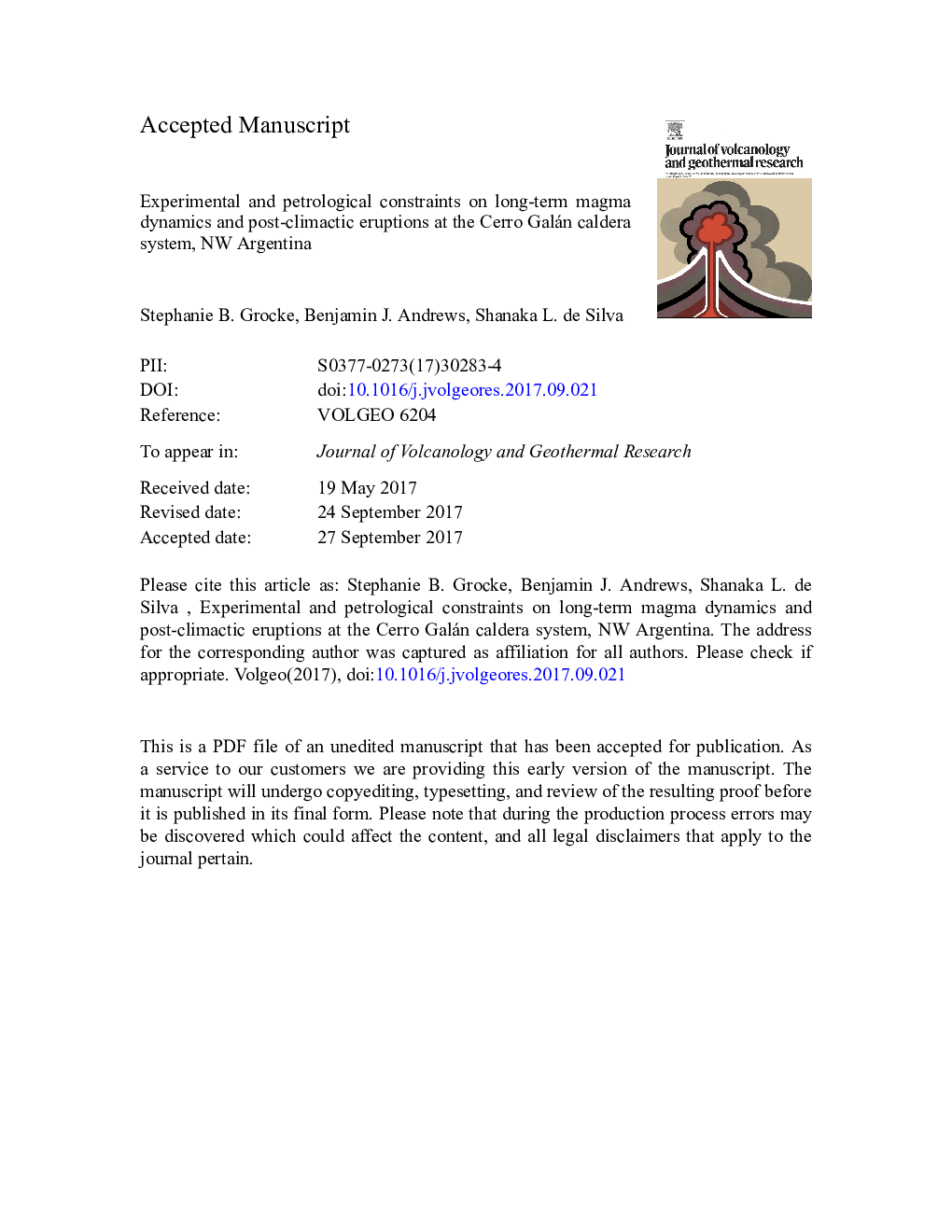| Article ID | Journal | Published Year | Pages | File Type |
|---|---|---|---|---|
| 8911465 | Journal of Volcanology and Geothermal Research | 2017 | 68 Pages |
Abstract
The post-climactic history of Cerro Galán is informed through a detailed investigation of the textural differences among the post-climactic dome lithologies, and a comparison of those textures with previously published decompression experiments. These suggest that the highly vesiculated, pumiceous clasts with rare microlites represent magma stored within the core of the lava dome that decompressed relatively rapidly (0.003-0.0003 MPa sâ1) and evolved via closed system degassing. Resulting over-pressure of the dome may have triggered superficial explosion. In contrast, dense clasts with abundant crystalline silica precipitates represent more typical dome-forming magmas that decompressed more slowly (< 0.00005 MPa sâ1), evolved via open system degassing, and form the outer carapace of a lava dome. Integrating decompression histories with results from new phase equilibria experiments suggests that during post-climactic volcanic activity at Cerro Galán, remnant CGI dome-forming magmas ascended from the shallow magma reservoir (< 4 km) to motivate resurgent uplift and erupt as lava domes either explosively as vesiculated clasts or effusively as dense clasts that make up the outer structure of lava domes.
Related Topics
Physical Sciences and Engineering
Earth and Planetary Sciences
Geochemistry and Petrology
Authors
Stephanie B. Grocke, Benjamin J. Andrews, Shanaka L. de Silva,
